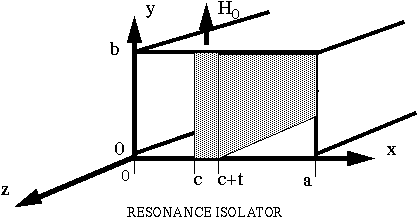
L. de Menezes and Wolfgang J.R. Hoefer
A major research effort in TLM is devoted to modeling of electromagnetic constitutive relationships, which describe the interaction of electric and magnetic fields with the medium. This work shows a simple procedure to represent the behavior of gyromagnetic media in the TLM algorithm.
The medium behavior is represented by equivalent sources connected to the node. The sources are determined by the constitutive equations and the total voltages and currents at the node. The differential equations describing these relationships are solved using state-variable techniques with suitable discretization schemes . The resulting system of difference equations is solved at each TLM timestep.
This technique has several advantages over conventional dielectric and magnetic models used in TLM. While the use of the stub-loaded approach is more efficient for frequency independent media, the proposed technique can model several kinds of constitutive equations with few modifications to the TLM algorithm. The technique is robust, can be used with several discretization schemes, results in a scattering matrix independent of the medium behavior, and can be integrated with conventional circuit analysis programs, if the equivalent circuit of the medium behavior is available.
The method presented in this work has been used to simulate an E-plane resonance isolator in a WR90 waveguide. The device was designed to have a 30 dB reverse attenuation at 10 GHz. The ferrite slab was 0.5 mm wide, 24 mm long, and placed at 2.54 mm from one of the inner waveguide walls, with a saturation magnetization of 1700 Gauss and a bias magnetic field of 2840 Oersteds. We used the backwards Euler scheme, because of stability problems encountered with the trapezoidal discretization approach. Since the backwards Euler scheme introduces numerical losses, it avoided the instability problems obtained using energy conservative schemes.
